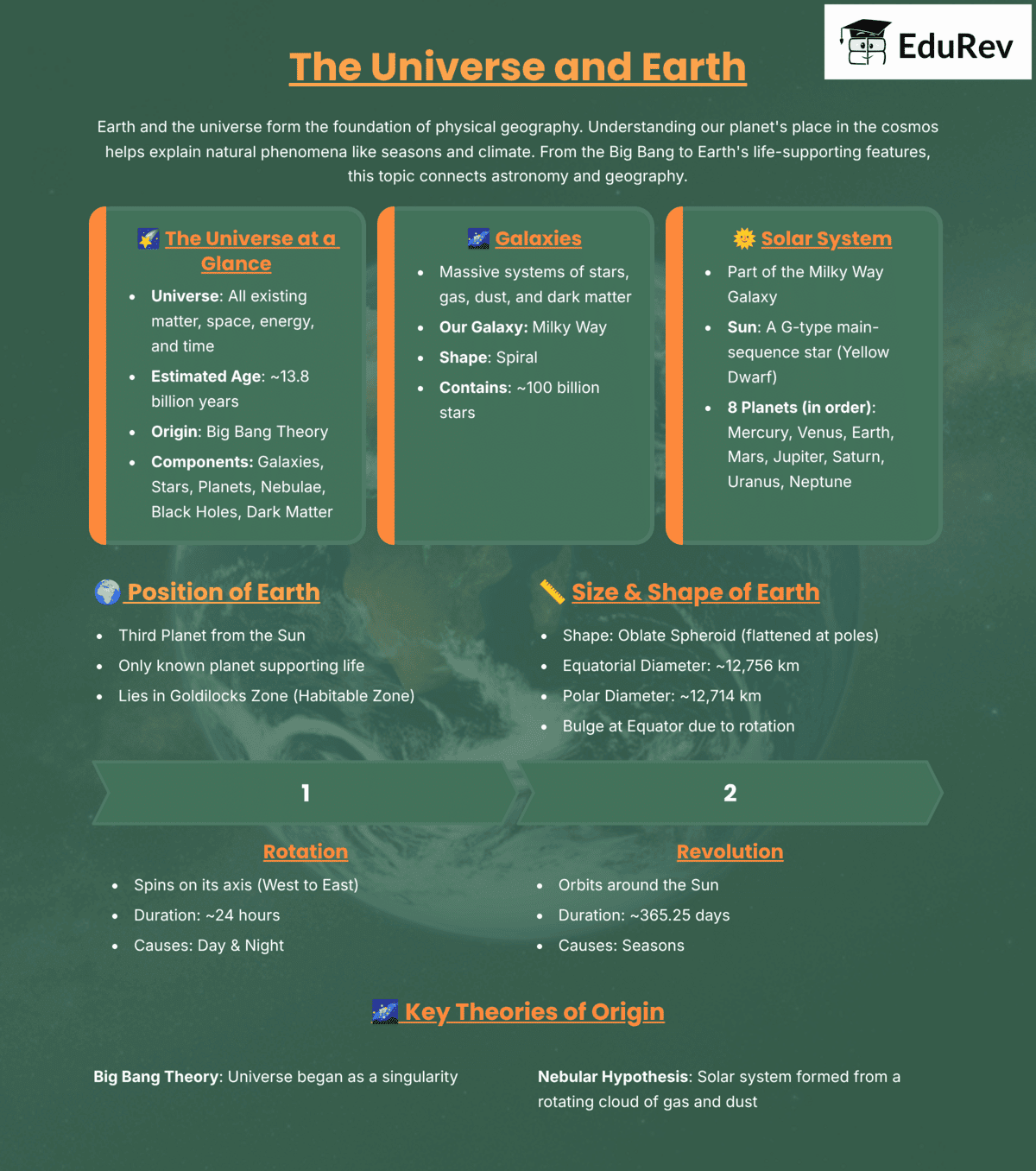UPSC Exam > UPSC Notes > Geography for UPSC CSE > Infographic: The Universe and Earth
Infographic: The Universe and Earth | Geography for UPSC CSE PDF Download

The document Infographic: The Universe and Earth | Geography for UPSC CSE is a part of the UPSC Course Geography for UPSC CSE.
All you need of UPSC at this link: UPSC
|
175 videos|624 docs|192 tests
|
FAQs on Infographic: The Universe and Earth - Geography for UPSC CSE
| 1. What are the major components of the universe? |  |
Ans.The universe is composed of several key components including galaxies, stars, planetary systems, dark matter, and dark energy. Galaxies are vast systems of stars and other celestial bodies, while stars are born from clouds of gas and dust. Planetary systems consist of planets orbiting stars. Dark matter is an invisible substance that does not emit light or energy, influencing the universe’s structure, whereas dark energy is a mysterious force driving the universe's accelerated expansion.
| 2. How did the Earth form in relation to the rest of the universe? |  |
Ans.Earth formed approximately 4.5 billion years ago from the residual materials left over after the formation of the sun. It is believed that the solar system developed from a giant rotating cloud of gas and dust, known as the solar nebula. Over time, particles within the nebula collided and combined to form larger bodies, ultimately leading to the creation of planets, including Earth.
| 3. What role do stars play in the universe? |  |
Ans.Stars are fundamental to the universe as they are the primary sources of light and energy. They undergo nuclear fusion, converting hydrogen into helium, which produces energy that radiates outwards. This process not only creates the light we see but also generates heavier elements that are crucial for forming planets and life. The lifecycle of stars contributes to the chemical enrichment of the universe through supernova explosions, dispersing elements into space.
| 4. What is dark matter and why is it important in understanding the universe? |  |
Ans.Dark matter is a form of matter that does not interact with electromagnetic forces, making it invisible and detectable only through its gravitational effects. It constitutes about 27% of the universe's total mass-energy content. Dark matter is crucial for understanding the structure and behavior of galaxies, as it helps explain the observed rotation curves of galaxies that would otherwise be inconsistent with visible matter alone.
| 5. What evidence supports the Big Bang theory? |  |
Ans.The Big Bang theory is supported by multiple lines of evidence, including the observed redshift of distant galaxies, which indicates that the universe is expanding. Additionally, the cosmic microwave background radiation, a remnant heat from the early universe, provides a snapshot of the universe when it was just a few hundred thousand years old. Lastly, the abundance of light elements such as hydrogen and helium aligns with predictions made by the theory regarding nucleosynthesis in the first few minutes after the Big Bang.
Related Searches
















